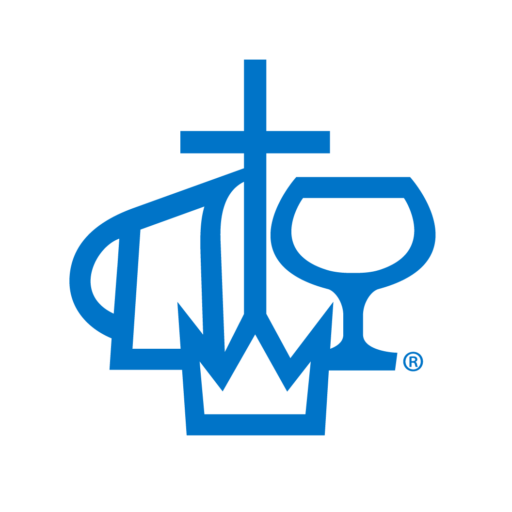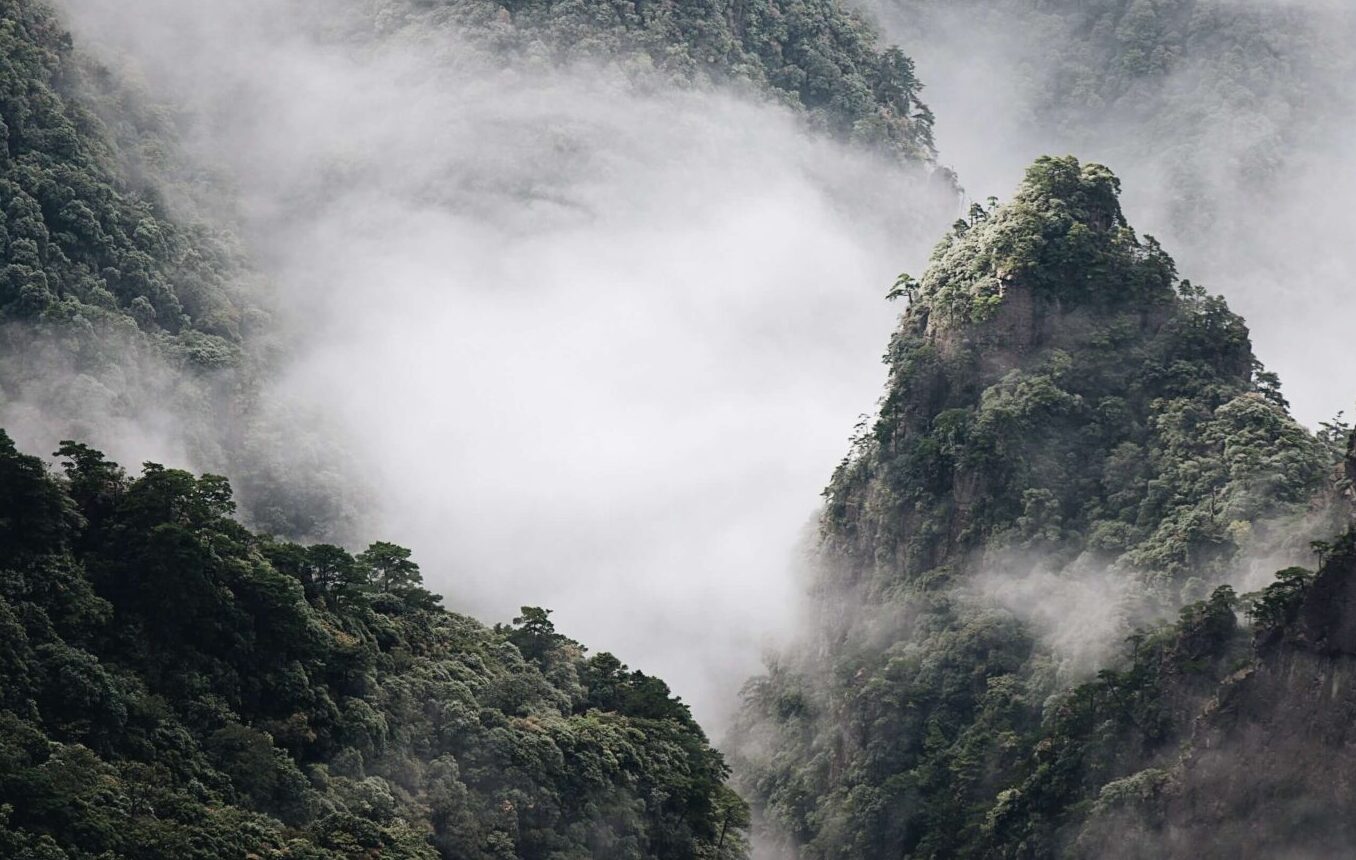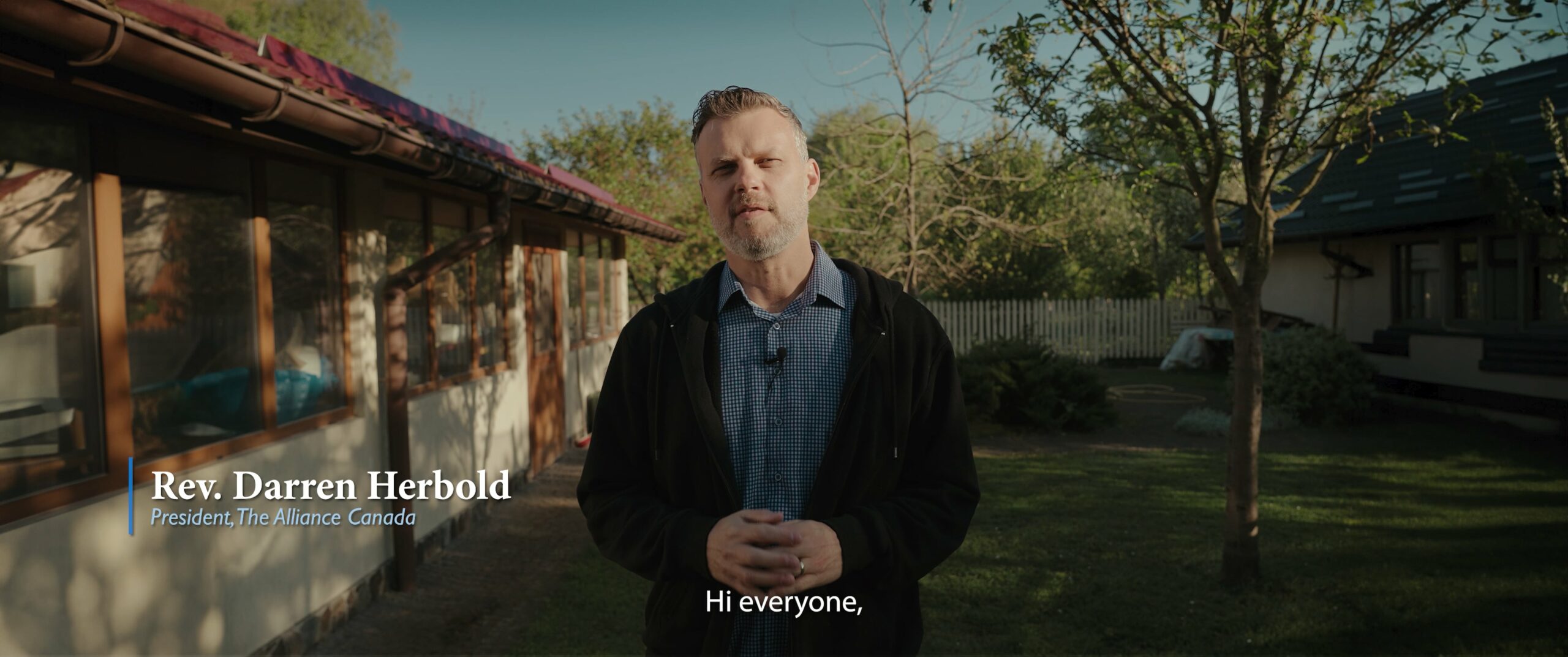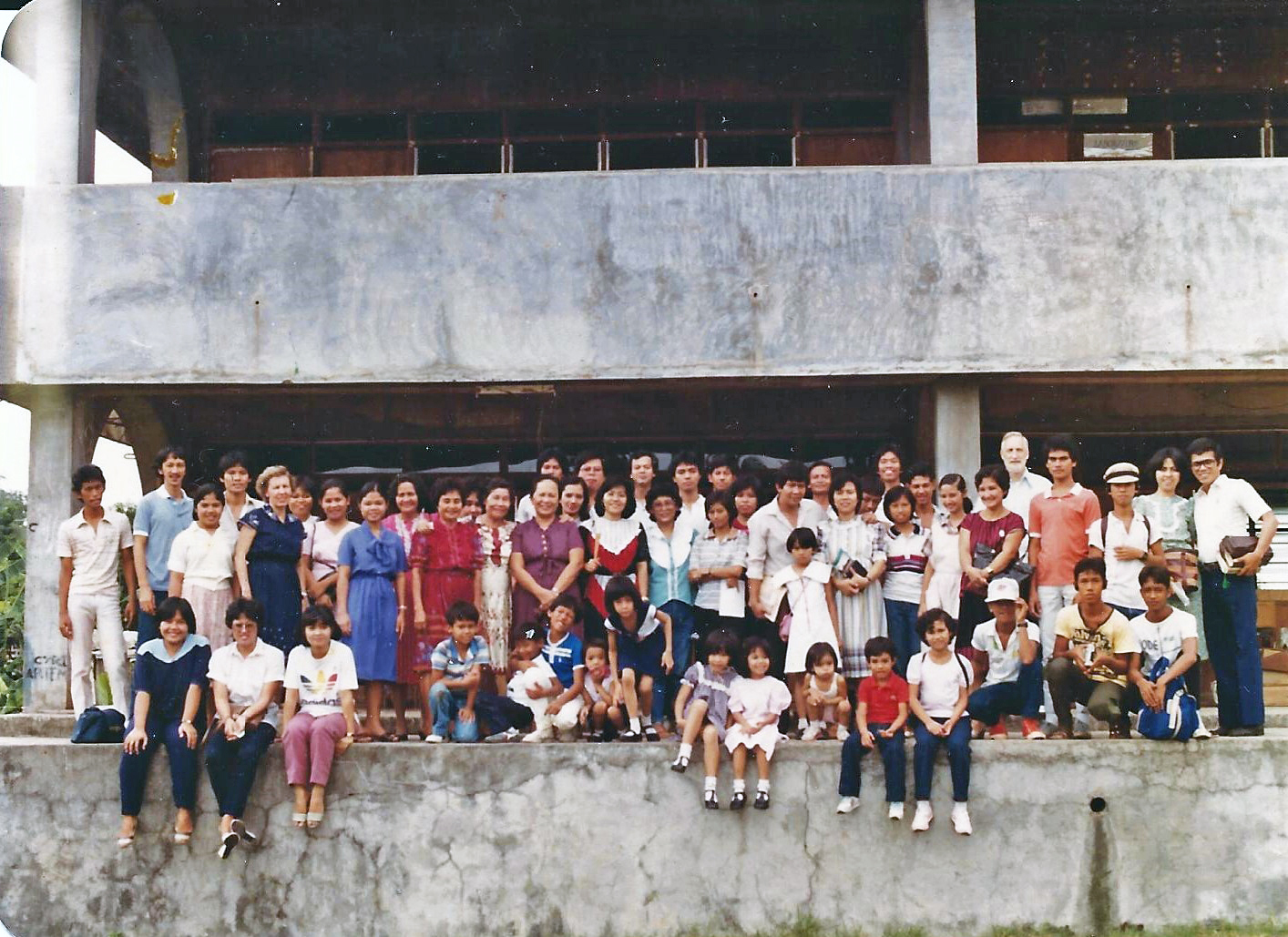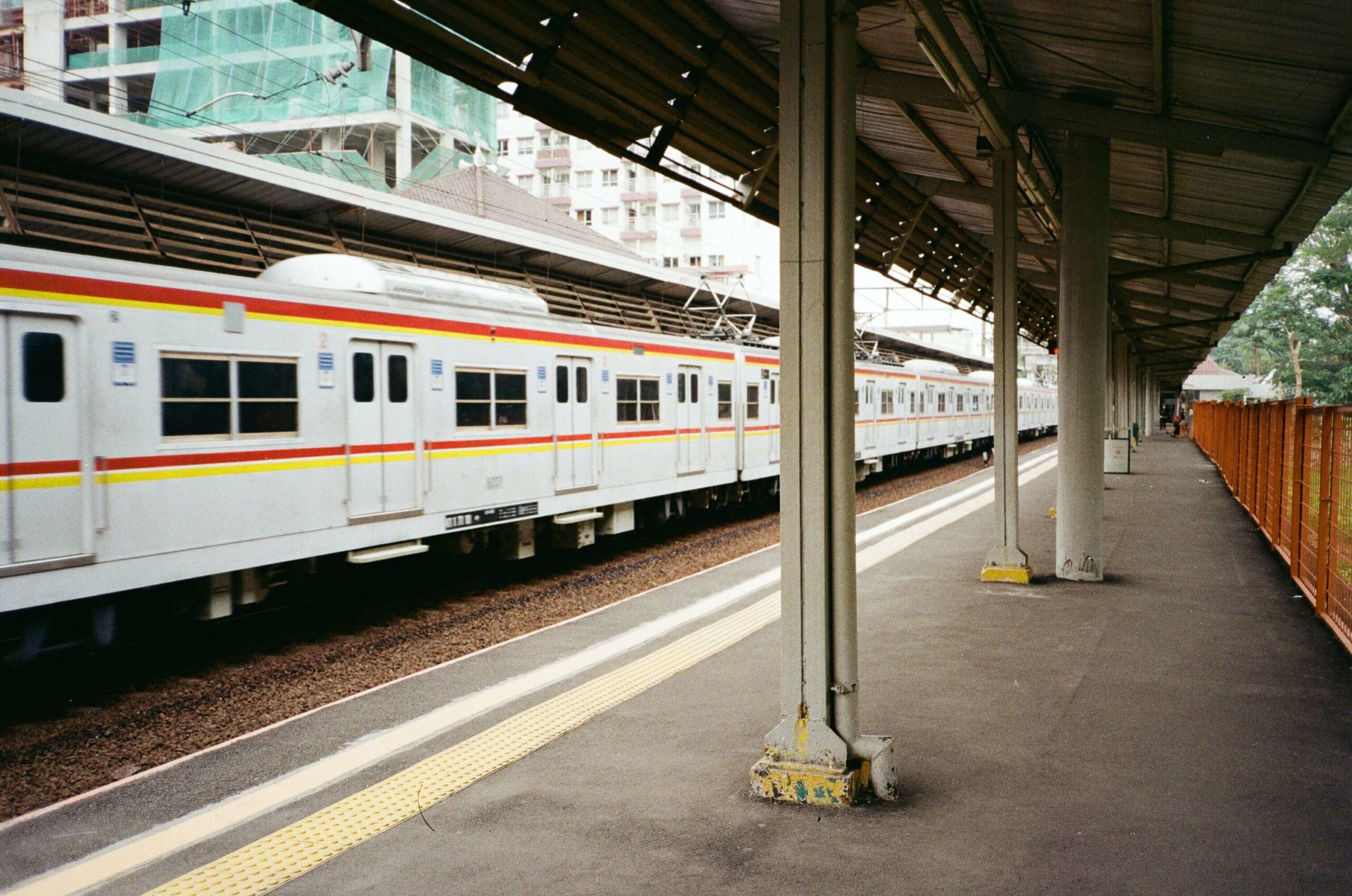Family Life
In 1897, a few months before turning twenty-four, Robert Jaffray and three other new missionaries travelled by ship to China. Jaffray and Dr. Robert Glover arrived in Guangxi Province. They studied the Chinese language in Teng County, joining a small group of missionaries who had been in China for three years already, including American missionary Minnie Donner.
Minnie was born in Medway, Ohio, on October 21, 1871. After becoming a believer at age seventeen, she soon felt the call to missions and was in one of the first classes of the Missionary Training school in New York. She went to South China in 1894, where her sister, Maizie, was married to Rev. Isaac Hess, field chairman.
The Chinese called Minnie “Sister Duna” and referred to her as a “preacher,” showing her involvement as an active Bible-teaching missionary in her own right. Jaffray married her in Hong Kong on August 7, 1900.
Minnie’s compassion drew her to the sex trafficking of young girls and women into slavery in the brothels, especially along the riverfronts. She was involved in the Door of Hope Mission organization in both Hong Kong and Shanghai. Working with Chinese helpers while based in Wuchow, Mrs. Jaffray endeavoured to visit women enslaved in these brothels.
Their daughter Margaret Morrison was born in 1907. When she was of school age, she studied in Chefoo, North China. The Chefoo School was founded by China Inland Mission in Yantai (Chefoo). As a Christian boarding school, with separate schools for boys and girls at the time Margaret attended, the students were given a British preparatory school education from a Christian perspective. Children were usually only able to visit their parents during December and January when the weather was healthier in the south and because travel to and from the school could take weeks at a time. By the time Margaret attended the Chefoo school, students were given Chinese language lessons to preserve the language they may have learned from their Chinese nanny (ayah).
Margaret attended high school in Toronto, where her Uncle William lived. She then took a business course and returned to China, where she worked as her father’s secretary while studying Chinese.
__________
Entering Vietnam
In 1898, just a year after arriving in China, Jaffray made his first trip to Vietnam, called Annan at that time. Eventually, missionaries were sent to Vietnam from the China field, and the field grew despite opposition from the French government and the difficulties caused by World War I.
In 1916, while remaining in Wuchow, Jaffray became the director of the mission to French Indochina or Vietnam. Jaffray visited the French Governor-General in Vietnam and persuaded him to allow the preaching of the Gospel in that colony. Using at least eleven languages, missionaries worked to spread the Gospel. Bible translation into the main language was emphasized, and under Jaffray’s leadership, a printing press and publishing house were set up in Hanoi. Hymnals, tracts, books, and Bibles were published and widely distributed.
Jaffray was repeatedly re-elected field chairman of the Vietnam field while still superintending the South China field from his home in Wuchow. To keep the mission work in Vietnam progressing well, Jaffray encouraged the field in their election of Walter Oldfield as vice-chairman. Jaffray made frequent trips to Vietnam, on occasion accompanied by his wife, Minnie. In 1920, they made a six-week trip to open a chapel in Saigon (Ho Chi Minh City) and take a vision trip to the as yet unreached Cambodia. They travelled more than one thousand miles north to Tourane and Hanoi.
Self-government
Jaffray was earnest in his desire to bring the Gospel to China and plant an independent, autonomous, self-leading Chinese church. This was not an opinion held by all the members of the Chinese mission field, and many of his fellow missionaries felt the church should not be fully autonomous until the church was financially self-supporting. Jaffray was forced to compromise and set up governance by three committees: one of missionaries, one of Chinese Christians, and one of leaders from both groups. When there was a difference of opinion, Jaffray brought himself into conflict with his fellow missionaries, often siding with the Chinese church.
By 1925, there were seventy-seven Alliance stations in Kwangsi in China. But in the face of the 1,533 market towns in the region, Tozer notes that Jaffray asked, “What are seventy-seven stations among these?”
__________
Political Stress and Theology of Risk
In the 1920s, China became politically unstable with outside influences from Bolshevik Russia and roving bands of armed militia became commonplace. In 1923, a militia group laid siege to the city of Kweilin for seventy-seven days. Among those in the city were several Alliance workers who watched over the Chinese girls’ boarding home at the Alliance school. One of their number, Rev. Cunningham, was shot. In Wuchow, Jaffray and the rest of the Alliance team prayed for Kweilin and eventually decided to try to rescue their fellow workers.
On their way to Kweilin, their riverboat was attacked by militia who demanded they pay a toll or ransom, and their armed escort of eighty soldiers abandoned them. The militia took the missionaries with them into the mountains and held them for ransom. With good humour, Jaffray later recounted how God had made sure he was wearing his most comfortable shoes when he was taken, so he could march without getting blisters. Jaffray continually proclaimed the Gospel to the militia despite their mistreatment. Eventually, a ransom was paid by Chinese officials, and the missionaries were released. Tozer notes, Jaffray found at the end of this ordeal, “his condition was definitely improved,” and he was able to “enjoy better health from that time forward.”
Later in the 1920s, the British were expelled from China, and soon other foreigners, including North American missionaries, also left. Then the persecution began to include local believers who endured beatings and imprisonment. In 1925, many Alliance missionaries were sent to Hong Kong to be safer under British protection. By 1927, five thousand missionaries had been forced to leave China.
Alliance missionaries re-entered China for a short time, but the continuing persecution and turmoil increased pressure on the local church and the North American missionaries. Jaffray used this time to encourage giving more independence to the Chinese church and to its leaders. During the four years of political instability, the Alliance workers continued with their evangelism, using gospel advertising on billboards, and publishing the Bible Magazine every month, smuggling issues of the magazine through roadblocks as necessary.
__________
The Power of a Dream
In 1927, Jaffray turned fifty-five. After thirty years of ministry in China, he was asked to return to the U.S. as vice president of the C&MA. Holding his call to foreign missions tightly, Jaffray refused politely, suggesting to work in the home office would be a step down.
By then, Jaffray was looking ahead to a world outside of China. The reality of thousands of Chinese working in the port cities of the South Seas without a gospel witness could not be ignored. In 1928, Jaffray made an exploratory trip by freighter to Sandakan, British Borneo, then later to Balik-papan in Dutch Borneo.
While in Balik-papan, Jaffray sensed a cloud of darkness there. He wrote, “It came upon me like a dark, thick cloud of gloom, and I could not shake it off. Only His light and joy finally dispelled the darkness. [I realized] I was on the enemy’s territory. Yes, here is a place where the supreme rule of Satan has never been disputed.”
Jaffray wrote in his prayer letter, “I hear the call of the great cities of Makassar and Surabaya. Those names were new to me…. Now they ring in my ears all day long and in my dreams at night! Makassar! Makassar! Surabaya! Surabaya! They now represent to me places of midnight darkness.”
Once back in China, Jaffray sent his report to New York and his request for funds to open a new mission in Borneo was denied. Yet, the needs of the people in the unevangelized area would continue to pursue him. One night, Jaffray had a dream which spoke to him clearly. He described it in 1928 in The Pioneer, “But the Lord gave me a dream. One of those vivid dreams which leaves a deep and lasting impression. I have seldom had such dreams in my life, but when He sends them, there is no question but that the dream is from Him.”
Jaffray continued, “It was a horrible dream. …I was a fugitive fleeing from justice. I thought I had stains of human blood on my hands. I thought the Lord Jesus was pursuing me. I was full of fear and was running for my life…. I awoke. My first words were, ‘Oh Lord Jesus, what does this mean?’” Jaffray, as he reflected on his dream, heard the voice of the Lord speaking to him, “If I warn them not, if I preach not the Gospel to them, I will be accountable for their blood. No wonder I have heard in my ears all these days the cry of the people of Borneo.”
In response, Jaffray wrote again to the board in New York but did not request funds or personnel. Instead, he told them that he was going to the Dutch East Indies or Borneo with their support or without. In response, a cable came giving permission to go, but with no promise of funding.
As Jaffray prayed over the lack of personnel and funding for this new outreach, the Lord clearly spoke to him, and the decision was made to send Chinese Christian workers to the Dutch East Indies as missionaries. Jaffray wrote in the South China Alliance Tidings, “Suddenly I was conscious the ‘Still Small Voice’ was speaking to my listening heart. I love to hear his voice.”
__________
The East Indies
n July 1928, only a few months after his trip to the area, Chinese missionaries S.W. Chue and later Leland Wang reached out to the Chinese in the East Indies. In 1929, Jaffray made another trip south, taking two more Chinese workers with him, and upon his return, more support for the endeavour came. Throughout the various articles written by Jaffray about the work in the East Indies, there is a reference to his Chinese fellow workers. He often mentions Pastor Chue, stating that he “was the first resident missionary in our work in the N.E.I., and …labored for many years, in Makassar, [and now] is in charge of the work in Soembawa.”
Pastor Chue led the outreach to Chinese merchants in the East Indies and reached out to the Indonesians in his region. In 1941, Jaffray noted in the annual report while, at first, the Chinese missionaries worked with the Chinese along the coast, they “soon felt … that their call was not to the coast towns but to the Dyaks in the interior.” Their work led to more than seven hundred Dyaks coming to
the Lord at that time.
Jaffray used his own personal funds while supporters throughout Canada and the USA also sent in finances. As Jaffray wrote detailed descriptions of every region of the East Indies in his prayer letters, word went out about Borneo, head-hunters, and the Dyaks. New missionaries from North America volunteered and were soon studying the Malay language. Within a few months, a gospel hall was built, and a new magazine started, The Borneo Pioneer, which was first printed in Wuchow. Jaffray also made plans for a printing press to publish the Bible Magazine in the Malay language and for a Bible school.
In 1930, at age fifty-seven, despite his ongoing struggle with diabetes, Jaffray continued to live in Wuchow and make frequent trips to the various islands of the East Indies. On a trip in 1930, Jaffray wrote of how he felt the Lord saying to him, “We pray, ‘Even so, come Lord Jesus, COME QUICKLY. But He seems to say to me, ‘Even so Disciple GO, GO QUICKLY. When you have gone into all the world with my Gospel to every land and kindred, then will I come.’”
By 1931, thirteen foreign missionaries were on the new field, along with numerous Chinese co-workers, working in eight different mission stations. At the highest, there were thirty foreign workers, twenty Chinese workers, and one hundred and forty local evangelists. Despite limited financing from North America due to the depression, the work in the East Indies went forward.
__________
Move from China
In 1931, Jaffray and his wife left their home of thirty-four years in Wuchow, China. While Jaffray’s role as missionary statesman led him to travel throughout China, Vietnam, and later the East Indies, he always wrote frequent letters home to his wife Minnie and daughter Margaret.
In February 1931, Mrs. Jaffray and Margaret, age twenty-four, sailed for North America, where Mrs. Jaffray stayed for two years. Margaret attended the Missionary Training Institute in Nyack, New York, then worked in ministry in Kentucky before arriving in Asia as a missionary. Mrs. Jaffray met her in Hong Kong and accompanied her to her post in Makassar in October 1934. Margaret wrote in The Pioneer in 1934:
“I’m glad to be home again! Four years have passed since I bade farewell to Makassar, and the shores of the Netherlands East Indies to attend the Missionary Training Institute at Nyack. Surely the goodness of and Mercy of the Lord have followed me these years, and I thank Him from the depths of my heart for leading me back to these needy islands.”
Margaret continued, “Four years have passed―and what are my impressions as I return to Makassar? How wonderfully the Lord has developed the work here at headquarters in this short time! Then, there was no Bible School. Now, over seventy students assemble daily to study the Word of God…. Four years ago, seven missionaries composed the staff of foreign workers. Now we are 17. Then we had no… converts in the city of Makassar, and during these years over a hundred have been saved and baptized.”
Jaffray wrote to his supporters while his family was in North America, “During these days alone here I have made it an almost invariable rule to retire early… and then to rise early in the morning at 4:30 or 5:00 o’clock and give three hours of the best part of the day to the Word and Prayer. I am having a wonderful time in the book of Revelation…. Thus, after three hours before breakfast in the Word of God and waiting on Him, I am ready for the 101 duties of the day.” It was also in the early morning hours when Jaffray often composed his many articles for The Bible Magazine.
__________
Printing and Praying
The printing press in Wuchow was burned in the fall of 1932 and could not be sent to Makassar. Using his own money and again gifts from his supporters, new presses were sent out and set up in Makassar to print hymn books, tracts, commentaries, and devotionals. Jaffray continued to write how the still, small voice of the Lord was speaking to him. In 1935, he noted the Lord “whispered in my ear time and again that He has ‘much people’ in Bali.”
Jaffray used the Scriptures in his prayer times, and during a visit to Bali, seeing the persecution of new believers, he spent time in prayer for them, and the words of Acts 8:1 came to him “with great force, and they proved to be a help and strength to Pastor Tsang and the Christians.” It is clear here how Jaffray prayed using Scripture and how he worked alongside Chinese missionaries sent from the church he had helped to plant in South China.
Jaffray wrote, “We must lengthen as well as strengthen” and underlined it was not enough to see more than forty-five hundred conversions by 1934, but strengthening by systematic training in Bible schools must be undertaken. By 1941, two hundred and nine local believers studied in the Makassar Bible Institute, and seventy-four Sunday schools, reaching over thirty-two hundred students, were organized. The church was also nearly financially self-supporting.
Jaffray also extended the mission into Malaya, three hundred miles north of Singapore, and purchased land for a mission station and Bible school using his own funds from the sale of The Toronto Globe in 1936. This independent initiative was not without criticism from the Home Office. William Smalley said, “Dr. Jaffray’s keen desire to have a part in every effort of getting the gospel to all men everywhere may have caused him to close his eye to what some thought were serious errors in judgement and administration.” In the end, with the Japanese invasion of Singapore, the project never progressed.
Jaffray also wrote in The Pioneer in 1933 about his own love of reading maps and praying about where God would next send the Gospel: “But the pouring over a map will not do any good, or bring the Gospel to lost souls, unless it begets prayer. We did pray, and we offered ourselves to go to these still unoccupied parts. The Holy Spirit has given us some experience in travail in prayer for these who sit in utter darkness and the shadow of death.”
One of the essential needs in the work in the East Indies was a place at a higher elevation, with cooler weather, where the missionaries could go for rest and healing from tropical diseases. In his letter in 1937, Jaffray thanked those friends whose gifts had made possible a “Rest Resort” in the mountains of Benteng-Tinggi, not too far from Makassar. Jaffray spent time there when he was ill for several months in 1937. Also, the annual mission conferences were held there.
Jaffray noted, “Some of our missionaries came to Conference badly broken in health, and in need of a prolonged rest and change ere they will be able to go back to work again.” Jaffray talked of the need for prayer on the one hand, and on the other hand, he blessed his supporters for their provision of this restful area for missionaries to have time to heal in body and spirit within the region.
__________
World War II
In 1941, fearing if they took their regular year-long home assignment in Canada, they would not be able to return to Makassar, the Jaffray family, including Minnie and Margaret, travelled to Manila, The Philippines, for a much-needed six-month furlough instead. Shortly after this, on December 7, 1941, the Japanese bombed Pearl Harbour, and Hong Kong was soon captured, along with Manila and Singapore.
Jaffray gave permission to the missionaries under him to return quickly to the U.S., and while some did leave, many stayed, including Robert, Minnie, and Margaret. Jaffray wrote, “I cannot leave while one missionary remains on the field.”
Within a short time, the Japanese took hold of the Dutch East Indies, the mission plane was captured, and the pilot, Rev. F.C. Jackson, was executed. Another worker, Rev. Andrew Sande, was also killed, and his wife and infant son soon after.
Jaffray moved the missionary team from Makassar to the mission rest home in Benteng Tinggi. But, on March 13, 1942, the Japanese placed the men under arrest in the police barracks in Makassar and interned the women in Benteng Tinggi, where Jaffray was kept with his wife and daughter. A total of ten Alliance missionaries were interned. Later, Jaffray was moved to camps in Molino and Pare-Pare. Allied planes flew over Pare-Pare and bombed the area. The prisoners were then moved to a mountain camp. Those interned were forced to work hard and fed barely enough to stay alive.
Life for the women missionaries interned at the Kampili Protection Camp, where they were moved to, was difficult. Mrs. Deibler wrote her family in North America in 1943 when she found her husband had died three months before. After two years of internment, Mrs. Deibler wrote, “It seemed even worse things could not happen but they did. Miss Jaffray and Miss Seely were both quite mentally deranged for some time but are, thank God, quite well at the present.” What type of abuse these young single women endured can only be imagined.
Rev. W.E. Presswood, who was interned with Jaffray, wrote two-thirds of the six hundred men interned had dysentery, and many died. Food was minimal, and it was the rainy season. The guards beat and abused the interned men. Presswood writes of Jaffray, “He weakened rapidly, like everyone else, but because of his age he could not hold out as long.”
Robert Jaffray passed away on July 29, 1945. Living in the camp with him was independent missionary Rev. F.R. Whetzel, who later wrote, “One of the great blessings of my life was the privilege I had of being interned with Dr. Jaffray on the island Celebes. I learned to love him as a great man of vision and faith.” The day after Jaffray died, Rev. Presswood conducted a funeral service for him, and a combined choir of interned Catholic and Protestant workers sang “Nearer My God to Thee.” Later a memorial service was held at the gravesite.
Mrs. Jaffray and Margaret had not been with Jaffray in two years and had no way to learn of his death until their own eventual release from the women’s internment camp. A memorial stands in Makassar at the site where his grave was moved after the war.
In his last prayer letter, written in 1942 upon his return to Makassar from the Philippines, Jaffray had written, “The promise is ‘When thou passest through the waters, I will be with thee.’ He is with us not only before and after the danger, but when we pass through it. His promise is very real to our hearts.”
__________
After Internment
After their release, Minnie and Margaret Jaffray returned to North America. Mrs. Jaffray, despite her ill health after years of internment, travelled throughout the U.S. to visit friends and family. She passed away very suddenly on November 10, 1946. The Pioneer in 1947 described Mrs. Jaffray as a “veteran of many years of consecrated missionary service in China, and finally also in the Netherlands, Indies. [She] endured the long and terrible ordeal of internment. God was pleased to bring her through this long period and give her the joy of reunion with loved ones and friends in North America. And then suddenly, she who had spent many years in His service, was removed from this earthly scene…. The strength of purpose, and the whole-hearted devotion to the Lord Jesus, which distinguished the life of our lamented and esteemed sister, were truly a challenge to us.”
The Pioneer in 1948 noted, before WWII, Margaret Jaffray had previously spent a term in the East Indies as a missionary, then was interned by the Japanese with the other missionaries. After her time in Toronto, she had now returned to Indonesia. By 1950, Margaret was teaching Dyak believers in the Malay language at the Long Bia Bible School in East Kalimantan, Borneo. In May 1950, violence between pro-Dutch and nationalist Indonesians brought violence to the Makassar, and Margaret described how God protected them with only a few shots being fired. She noted the missionaries were taking refuge from the violence at the Mission Home, and some were aboard the Borneo boat, hoping to leave the area soon.
In 1951, Margaret left by plane for the United States and then Canada due to ill health. In The Pioneer, it was written her “command of the Indonesian language has made her ministry a great blessing among the students” and it was hoped God would “touch her with His quickening power and give her a ministry among you also.” Back in Toronto, Margaret taught Sunday school in the Alliance Tabernacle but unfortunately, in 1959, she passed away after being in a car accident with friends in Orillia, Ontario.
This is an excerpt from the book, On Mission Volume 2. Download your free copy today.
Share:
Find more posts about:
The Alliance Canada
Support the mission
The Global Advance Fund (GAF) is a pooled fund that supports our workers in Canada and around the world to share the Gospel with people who haven't yet heard the name of Jesus. Your continued generosity equips and sustains our workers and their ministry.

